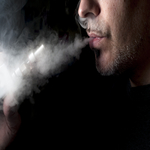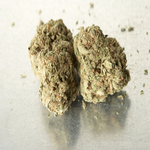Recovery is a cause for celebration, whether you are 24hrs sober or 24 years; abstaining from drugs and alcohol is a huge accomplishment. Substance use disorders plague the lives of millions of people, leaving wreckage in its wake; the brave individuals who have made the decision to free themselves of the bondage of addiction are worthy of commendation, working towards repairing the damage of their past and practicing a set of principles to ensure a healthy future. September is National Recovery Month, now in its 26th year the National Recovery Month is a time to honor the millions of people who have worked a program of recovery for nearly a century.
Throughout the month, SAMHSA sponsored events are being held to celebrate the countless men and women who are working a program of recovery, and everyone who works in the field of addiction or mental health – helping people live a life free from the insidious effects of drugs, alcohol and mental illness. People who have found recovery and those who work in the field, remind the general public that addiction is a disease not a moral failing. It is an illness that requires treatment, not incarceration.
The nation has long been in the grips of an opioid epidemic. While terrible, the scourge of opioid abuse has touched people from every class, race and demographic; reinforcing the fact that anyone can be caught in the grips of addiction. Ridding the world of the stigma of addiction will drive more addicts toward the rooms of recovery, and fewer people to the morgue. Dismantling the stigma of addiction is one of the main goals of the National Recovery Month. According to SAMHSA:
“Recovery Month promotes the societal benefits of prevention, treatment, and recovery for mental and substance use disorders, celebrates people in recovery, lauds the contributions of treatment and service providers, and promotes the message that recovery in all its forms is possible. Recovery Month spreads the positive message that behavioral health is essential to overall health, that prevention works, treatment is effective and people can and do recover.”
President Obama has Proclaimed September:
NATIONAL ALCOHOL AND DRUG ADDICTION RECOVERY MONTH,
2015
– – – – – – –
BY THE PRESIDENT OF THE UNITED STATES OF AMERICA
A PROCLAMATION
Every day, resilient Americans with substance use disorders summon extraordinary courage and strength and commit to living healthy and productive lives through recovery. From big cities to small towns to Indian Country, substance use disorders affect the lives of millions of Americans. This month, we reaffirm our unwavering commitment to all those who are seeking or in need of treatment, and we recognize the key role families, friends, and health care providers play in supporting those on the path to a better tomorrow.
This year’s theme is “Join the Voices for Recovery: Visible, Vocal, Valuable!” It encourages us all to do our part to eliminate negative public attitudes associated with substance use disorders and treatment. People in recovery are part of our communities — they are our family and friends, colleagues and neighbors — and by supporting them and raising awareness of the challenges they face, we can help eradicate prejudice and discrimination associated with substance use disorders, as well as with co-occurring mental disorders. Prevention and treatment work, and people recover — and we must ensure all those seeking help feel empowered, encouraged, and confident in their ability to take control of their future. Americans looking for help for themselves or their loved ones can call 1-800-662-HELP or use the “Treatment Locator” tool at www.SAMHSA.gov.
My Administration remains dedicated to pursuing evidence-based strategies to address substance use disorders as part of our National Drug Control Strategy. Seeking to widen pathways to recovery, our strategy supports the integration of substance use treatment into primary health care settings and the expansion of support services in places such as high schools, institutions of higher education, and throughout the criminal justice system. In the wake of public health crises related to non-medical use of prescription drugs and heroin in communities across our Nation, my Administration has pledged considerable resources to help Federal, State, and local authorities boost prevention efforts, improve public health and safety, and increase access to treatment in communities across the country. And the Affordable Care Act has extended substance use disorder and mental health benefits and Federal parity protections to millions of Americans.
Behavioral health is essential to overall health, and recovery is a process through which individuals are able to improve their wellness, live increasingly self-directed lives, and strive to fulfill their greatest potential. During National Alcohol and Drug Addiction Recovery Month, we reaffirm our belief that recovery and limitless opportunity are within reach of every single American battling substance use disorders, and we continue our work to achieve this reality.
NOW, THEREFORE, I, BARACK OBAMA, President of the United States of America, by virtue of the authority vested in me by the Constitution and the laws of the United States, do hereby proclaim September 2015 as National Alcohol and Drug Addiction Recovery Month. I call upon the people of the United States to observe this month with appropriate programs, ceremonies, and activities.
IN WITNESS WHEREOF, I have hereunto set my hand this thirty-first day of August, in the year of our Lord two thousand fifteen, and of the Independence of the United States of America the two hundred and fortieth.
BARACK OBAMA
__________________________________________________
If you are or a loved one is struggling with addiction, please contact Harmony Foundation to begin the journey of recovery. Harmony is a state-of-the-art, affordable, residential addiction treatment program located in the Rocky Mountains.











